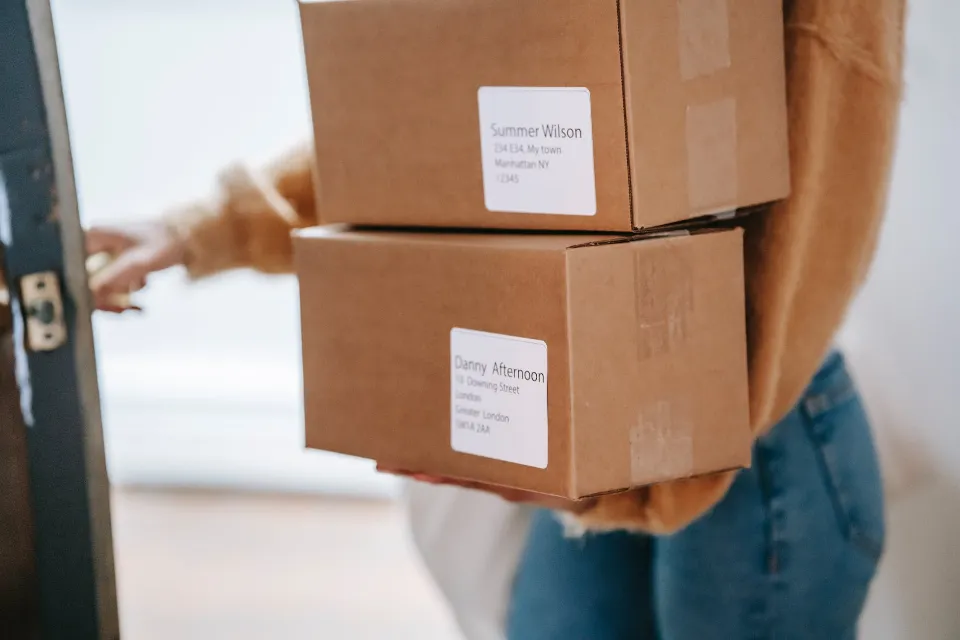Size, weight, and item type are a few things to think about when choosing how to ship a package. The most popular and affordable method of shipping for little, light items is parcel shipping.
However, in order to fully benefit from parcel shipping, you must use the right protective packaging to guarantee that your goods reach their destination without damage.
What is Parcel Shipping?
Parcel shipping is a cheap freight option if your company frequently ships small items. Products shipped via parcel shipping are lightweight, have small, uniform dimensions, and are simple for one driver to deliver. It needs to be a single shipment that weighs less than 150 lbs to qualify as a parcel.
Four facts about parcel shipping:
- Small, light objects weighing less than 150 lbs are referred to as parcels. carried by truck or plane.
- Shipping packages is affordable, quick, and effective for small businesses.
- Vehicles are filled with loosely loaded parcels that need special packaging.
- For a successful delivery, perishable goods require cooling and insulating packaging.
Parcel Shipping for Perishable Items
For the quick and effective delivery of perishable goods, parcel shipping is the best option. Without being frozen or kept in a refrigerator set to 40°F or lower, perishable foods are unsafe to consume. It’s crucial to package perishable items properly for shipping because they may be exposed to a range of temperatures or humidity levels.
You can stop perishables from spoiling with the right insulation and refrigeration setup. Expanded polystyrene foam or reflective foil box liners are examples of typical insulation materials. For refrigeration, both gel coolants and dry ice are frequently used. Use gel coolants instead of dry ice when transporting live seafood, such as crabs or lobsters, to avoid contamination.

How to Prepare Packages for Shipment
Single parcels experience frequent velocity changes and abrupt height drops, which cause items to be damaged, according to a study of international air parcel shipping. Similar to how items move while being transported, courier trucks frequently stop abruptly while moving at high speeds.
Unlike LTL shipments that are secured on pallets for transport, parcel shipments are placed loosely in trucks or airplanes, so protective packaging is essential for safe transit.
Put your package in a brand-new or sturdy shipping box that has room for bubble wrap, packing peanuts made of styrofoam, and other protective materials. Once the parcel is secured inside the box, you’ll need to use 2″ wide packaging tape to seal the box. Use of duct tape or Scotch tape should be avoided as the adhesive may deteriorate and result in product spillage or damage.
It’s crucial to keep heat and moisture out and cool temperatures in when transporting perishables. Perishable items include fresh flowers, produce, frozen foods, meat, and other products. Because it serves as an insulator and a barrier of protection, Styrofoam packaging is perfect for ice cream and seafood.
You must weigh and measure your package after it has been properly boxed and taped. The package must be addressed as you would an envelope by taking measurements of its length, width, and height. In the top left corner of the box, type the sender’s address. The recipient’s address should be written directly beneath the sender’s address. Include a 24-hour phone number for the recipient and the shipper in perishable parcel shipments as well.
How Are They Transported?
Due to their small size, parcels are automatically sorted by machines after being dropped off at drop-off locations. The packages are loaded onto trucks after sorting and usually delivered to the location or transferred before reaching the final destination.
Benefits of Parcel Shipping
- Ideal for small packages
- Faster domestic shipments
- Ships directly from drop-off locations
- Delivers directly to a residential or business address
- Lower freight costs
What’s the Difference Between Parcel and LTL Shipping?
LTL typically handles bigger packages than parcels. While parcels are loaded directly onto a truck, LTL shipments are typically stored on pallets. Here are some key differences between parcel and LTL shipping:
1. Damage and Loss Prevention
Parcel shipping has a higher chance that it will become lost or damaged than LTL
shipments. But parcels are smaller and can be packed in greater quantities.
2. Tracking and Checkpoints
Parcel packages go through several checkpoints, so carriers are updated more
frequently than LTL packages, which make tracking the package simple. The likelihood of a safe delivery is increased by LTL shipping’s fewer checkpoints, though.
3. Costs
Due to the larger size of LTL packages, shipping costs are higher. Many carriers have
additional charges tacked onto original pricing, such as extra fees for correcting an address mid-delivery.
Freight Vs Parcel Shipping

What is Freight Shipping?
Large quantities of goods are transported via freight. Whenever you think of “cargo” rather than “parcel packages,” you’re probably thinking of freight.
Parcel shipments are limited to 150 pounds by UPS, FedEx, and DHL. Anything bigger than that is regarded as a freight shipment. (And smaller parcels will still be charged overage fees or large package surcharges.) There are limitations on size as well; FedEx and UPS both move packages that are larger than 108 by 165 inches to freight.
The size of freight shipments is determined by how much room they occupy in a shipping container. A full truck trailer, which is typically between 40 and 53 feet deep, eight feet wide, and 13 feet high, holds full truckload shipments. Depending on local regulations, weight restrictions range from 35,000 to 45,000 pounds.
LTL shipments (less than truckload) typically weigh under 10,000 pounds and occupy less than a full truck bed. LTL shipments are transported through the networks of freight companies like Con-Way and YRC Freight on their way to their final destinations.
Despite not filling the entire truck, partial truckload shipments are typically larger than LTL shipments and are handled less frequently.
Trucks, cargo planes, ships, trains, and most likely some combination of the four are all viable options for moving freight.
What is Parcel Shipping?
Most retailers are familiar with parcel shipping as a form of delivery. Typically, small parcel carriers like UPS, FedEx, USPS, or DHL move parcels one at a time via ground or air shipping.
In general, any package weighing less than 150 pounds can be transported by a parcel shipper, but the majority of package shipments weigh less than 70 pounds. No pallets are used to ship packages, and the shipper or carrier typically provides the packaging for packages.
Who Should Use Freight Vs. Parcel?
Freight shipping is typically used for moving enormous quantities of goods to one location. Freight typically arrives in ports or very large warehouses because distribution centers that receive freight shipments must be able to handle thousands of pounds of goods.
Furthermore, since freight shipments pass through these sizable facilities and travel by ship and train, they may be more likely to experience unforeseen delays. Additionally, freight packages are typically packed on pallets, which are difficult to protect against damage.
Because of all these factors, commercial shippers almost exclusively use freight. Businesses along a supply chain that are simultaneously transporting tens of thousands of components to an assembly facility are a good fit for freight shipments.
However, unless they are shipping very large items, residential and small- to medium-sized retail shippers almost always use parcel shipping. It is unlikely that these shippers will move enough goods to make freight more affordable than parcel. They need more responsive service because they are more likely to ship to numerous dissimilar locations. Additionally, there is more urgency for their packages to arrive on time because they are typically closer to the end of the supply chain.

There may be murky waters. Depending on shipment volume and destination, packages that weigh more than 70 pounds but less than 150 pounds may go either way. Palletizing and shipping identical goods in sufficient quantities via freight may be an option if they are being shipped to a single location.
However, if you frequently ship small LTL loads via freight, it might be time to review your options for sending parcels, particularly if your individual packages are of a smaller size.
Some shippers only provide freight or parcel delivery services. However, some of the biggest names in both industries, like FedEx and UPS, offer both kinds of service. It’s important to remember that while these businesses provide both freight and parcel services, they typically operate these business divisions as separate entities and engage in separate contract negotiations.
It’s unlikely that you will be able to include freight service in an existing contract you have with a carrier.
Let Reveel assist you if you are a parcel shipper interested in learning more about freight, or the other way around. These shipping companies’ services are well-understood by our knowledgeable consultants because they have experience working there. We can assist you in conducting a thorough analysis of the products your business ships, assisting you in identifying the best solutions and your service options. We can also assist you in contract negotiations if you decide that incorporating freight or parcel service into your offering would be a wise move.
Final Thoughts
Delivering goods to customers quickly and affordably is possible for small businesses that frequently ship lightweight goods using parcel shipping. But you need the proper packaging supplies to make sure your packages arrive safely.
Styrofoam boxes, packing peanuts, and air pillows are just a few examples of the protective packaging that Air Sea Containers carries. To find out more about how picking the best shipping and packaging options can benefit your business, browse our online catalog or visit our blog.

